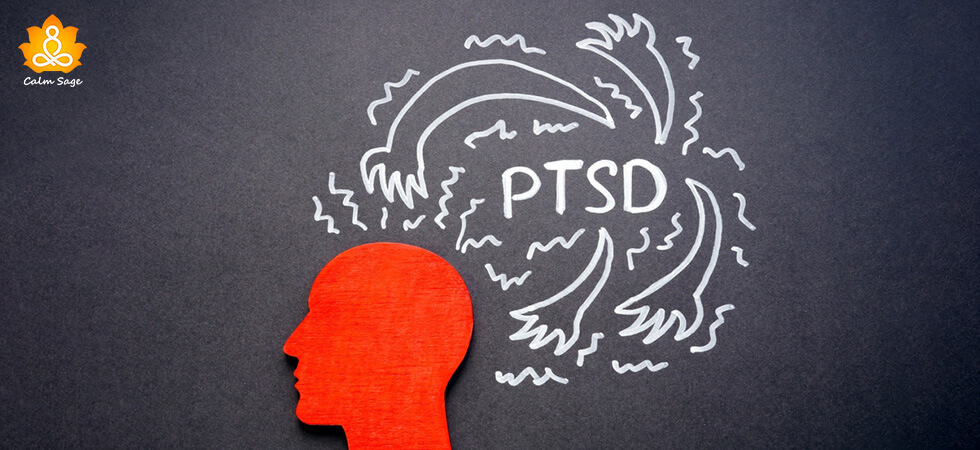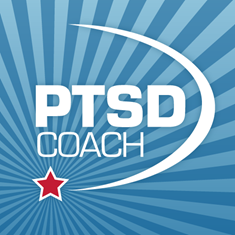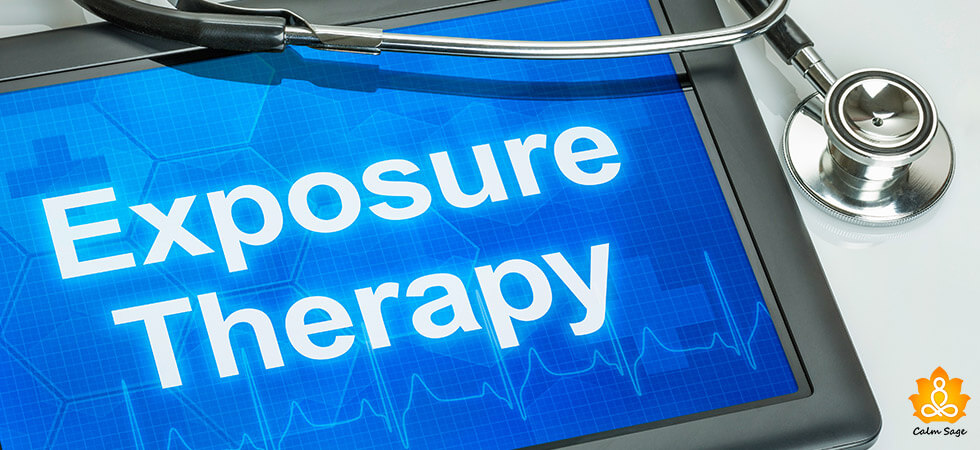Breaking the Silence: Essential Resources and Support for PTSD Awareness Month

June is National PTSD Awareness Month and we, at Calm Sage, are marking this month by helping you break the silence on trauma and connect with the right people, resources, and support. PTSD or Post-traumatic stress disorder is a mental health disorder that occurs after a person has experienced a highly traumatic event such as war, abuse, near-fatal accidents, etc.
Living with PTSD can be quite distressing as the symptoms can include severe depression, anxiety, flashbacks, nightmares, paranoia, sleep disorders, intrusive thoughts, and more. Recovering from PTSD can take months and even years, and even though it is a treatable disorder, the stigma and silence surrounding the condition can prevent people from seeking the right help and support.
To help spread awareness of this severe mental health disorder, we’re bringing to you PTSD help and resources you can reach out to for a better understanding of the mental health disorder. Before we move on to the resources for PTSD, let’s take a look at a brief history of PTSD Awareness Month.
PTSD Awareness Month – History & Origins
The origins of PTSD Awareness Month are not that far back to trace. In 2010, the U.S. Senate announced June 27th as the National PTSD Awareness Day, however, in 2014 it was decided to dedicate the month of June as PTSD Awareness Month. For organizations and support groups who were working diligently to spread awareness about post-traumatic stress and trauma, it was the news most welcomed.
The U.S. Department of Veterans Affairs is one of the largest organizations that fight against PTSD and works to break the silence on post-trauma stress. They release special wallpapers as well as engage in various activities such as social media campaigns, articles, videos, etc. all to help spread awareness as well as provide resources and support to PTSD survivors.
If we talk about the history of this disorder, we can trace it back to 50 B.C. when Hippocrates’ poem, narrated a soldier’s symptoms after a war. Between the 1910s–1940s, PTSD gained a lot of attention albeit under different names such as ‘Shell Shock’ and ‘Battle Fatigue’.
During the Vietnam War in the 1970s, U.S. military veterans began describing their trauma and their symptoms after the war which caused the disorder to be officially named ‘post-traumatic stress disorder.’
A Look at The Statistics
Anyone can show signs and symptoms of PTSD if they’ve been through a major traumatic event. Trauma is a broad term that can hold different kinds of experiences under it such as abuse – emotional, mental, physical, sexual, etc., accidents, wars, or any other shocking or life-threatening event.
Many of us experience at least one traumatic event in our lives that could be a cause of PTSD. Other situational or social factors such as witnessing a traumatic event, gender discrimination, hate crime, etc. can all cause trauma as well.
Here are some recorded statistics of how common PTSD is in the U.S. adult population according to the U.S. Department of Veterans Affairs;
- Not all people who experience a traumatic event develop PTSD.
- Every 6 out of 100 people have PTSD at some point in their lives.
- Every 5 out of 100 adults
- In 2020, about 13 million Americans were diagnosed with PTSD.
- Women are more likely to show PTSD symptoms than men. 8 of every 100 women and 4 of every 100 men will have PTSD at some point in their life.
- Veterans are more likely to have PTSD than civilians.
- 70% of people who experience mass violence are prone to develop PTSD.
- PTSD can be genetic.
According to data collected from the National Institutes of Health, 10% of U.S. adults are diagnosed with substance use disorder at least once in their lives but out of these 75% of adults go untreated.
Among people with SUD, 75% of them report a history of trauma and abuse. In a staggering number, 97% of homeless women with mental health disorders have a history of sexual or physical abuse.
Around 12-30% of people in addiction recovery show reports of PTSD and almost 33% of adults who are exposed to trauma develop symptoms of PTSD.
Given these statistics, there’s still a severe stigma surrounding mental health disorders that prevent people in need from seeking the right help and support. With efforts from government, private, as well as global organizations, various PTSD helplines, hotlines, and resources have been established to help PTSD survivors reach out for help.
Let’s take a look at how PTSD Hotlines can help people in need and what you can expect from PTSD Hotlines.
Quick Signs And Symptoms of PTSD
- Flashbacks
- Physical symptoms like a racing heartbeat or sweating
- Nightmares or PTSD night terrors
- Avoiding places, events, or objects that can be associated with the traumatic event
- Avoiding thoughts or feelings related to the traumatic event
- Being easily startled
- Feeling “on edge”
- Trouble sleeping
- Frequent emotional or angry outbursts
- Trouble remembering and having memory lapses
- Frequent negative thoughts
- Feelings of guilt and shame
- Loss of interest in enjoyable activities
When to Connect With PTSD Hotlines?
If you’re looking to connect with PTSD hotlines or helpline numbers then you must know when and how to do it. PTSD hotlines are designed to help you understand your PTSD symptoms and how you can cope with them at the moment. For example, if you’re having intrusive thoughts; a hotline here will help you calm down and clear your mind using strategies to make you feel safe again.
Like other mental health hotlines, PTSD hotlines are operated by professionals and aim to provide a safe space for you to discuss your condition, treatment, or other essential resources.
While you can find this information after a quick internet search, a hotline is there to provide you with this information more practically and might also help you identify your symptoms more accurately.
PTSD Hotlines – How Can They Help?
Because of misinformation, stigma, and various myths, it can be hard to seek help. Many people are hesitant to seek help because they don’t know where to begin. The symptoms of PTSD in itself can be overwhelming and distressing; throw in uncertainty and fear of judgment, and you’ve got a fearful combo.
Here enters PTSD Hotlines. The people on the other end of the Hotline can point you in the right direction. The first thing you can do is know what to say and ask a PTSD Hotline.
Note these questions somewhere safe where you can easily access them during your call with a PTSD helpline or hotline;
- What is PTSD, its symptoms, and its treatment?
- Can medications be used to treat PTSD?
- What do I do if I’m having a flashback or recurring nightmare?
- Who can I see to get myself treated? Are there specialists?
- What should I ask my insurance company?
- Is there rehab or outpatient treatment for PTSD?
- What kind of counseling is good for PTSD? Private or Group counseling?
- What are the next steps I should take?
These are just some basic questions that you can start your conversation with a hotline staff member and go from there. If your loved one is living with PTSD or showing symptoms of PTSD or post-trauma stress, then you can also connect with a PTSD helpline and seek answers to further help and support your loved one.
More often than not, friends and family members are the people who can act as a liaison to connect their loved ones with the right help. It’s important to keep in mind that even though it may take time, your loved one can heal and recover.
If you’re calling a PTSD Helpline to seek directions to help a friend or a family member, then you can start the conversation with these questions;
- What should I do; my loved one needs help for PTSD.
- Are there resources for PTSD available for family or friends of the one with PTSD?
- How can I talk to my loved ones about their PTSD and encourage them to seek help?
- What can I do if I think my loved one is in danger?
- What are the symptoms and treatment for PTSD?
- What are the common triggers for PTSD that I should know about?
- How can I show my support to my loved one?
- What should I do if my loved one shows signs of substance abuse?
- How can I cope while my loved one is going through this?
PTSD And Related Conditions
People with PTSD can also develop other disorders and conditions such as anxiety, depression, chronic illnesses, and more. If you’re already vulnerable to a mood disorder, then trauma can trigger a depressive episode.
Other conditions that co-occur with PTSD often include substance use disorder and neurocognitive disorders. Traumatic brain injuries can also contribute to the development of PTSD symptoms.
In older studies, it was found that there was a connection between PTSD and cardiovascular disease, high blood pressure, and obesity. Unaddressed and untreated PTSD can also increase the risk of stroke and cancer.
Other mental health disorders that can be related to PTSD can include;
- Anxiety disorders
- Adjustment disorders
- Acute stress disorder, and
- Attachment disorders
PTSD Treatment Options – A Quick Overview
To treat PTSD, there are various approaches, however, the most common approach is talk therapy. The initial treatment begins with talk therapy and can then progress into trauma-focused therapy, interventions, medications, and other lifestyle changes.
Only a professional psychologist or a psychiatrist can provide the right treatment and offer techniques. Other therapeutic methods that can be integrated into trauma therapy can include EMDR, sound therapy, and more. The integration of these methods may depend on how well your initial treatment is progressing. Remember, each person may respond to the treatment differently.
Lifestyle changes are also recommended for treating PTSD. Your therapist might recommend regular exercising, a healthy diet, and other such techniques to improve the symptoms of PTSD along with symptoms of other co-occurring conditions such as depression, stress, and anxiety.
Resources For PTSD
You can reach out to organizations that work in raising awareness for PTSD, mobile apps, PTSD hotlines, and support groups for PTSD victims and survivors to seek support. Here are some of the resources for PTSD that you can use to get the help you need;
Essential PTSD Organizations
1. Anxiety and Depression Association of America (ADAA)
ADAA is a nonprofit organization that is dedicated to helping treat and prevent disorders such as depression, anxiety, and even post-trauma stress.
2. National Institute of Mental Health (NIMH)
NIMH is another institute that is dedicated to spreading awareness and research on mental health disorders and other areas of public health.
3. PTSD Alliance
PTSD Alliance is a professional advocacy organization that relies on partnerships with other organizations such as ADAA and more. They help spread information and awareness on PTSD and also have self-help resources for you to peruse on the website.
4. S. Department of Veterans Affairs (VA)
The U.S. Department of Veterans Affairs is a government organization that works solely on educating people about the conditions veterans go through and also provides treatment and consultation to veterans and their loved ones.
PTSD Support Networks
1. Anxiety and Depression Association of America (ADAA)
Apart from being an organization, ADAA also has a support system or support group that has at least 40,000 members. You can also access free peer support groups and connect with people going through similar issues and struggles as you.
2. The Mighty
Another support network that helps you connect with people living with PTSD, the Mighty is where you can share personal stories and engage with others in the community. Plus, you get access to inspirational stories, and thoughts, and can even ask questions for support.
PTSD Hotlines
Here are some PTSD Hotlines you can connect with;
- National Alliance on Mental Illness (NAMI): 1800-950-6264 or text NAMI to 741741 for free support
- Substance Abuse and Mental Health Services Administration (SAMHSA): 1800-662-4357
- Boys Town: 1800-448-3000. Specially trained counselors provide crisis support specifically for children with PTSD and their families
- National Suicide Prevention Lifeline: 988
- Veterans Crisis Line: 1800-273-8255 or send a text message to 838255
- Crisis Text Line: Text HOME to 741741
- PTSD Foundation of America, Veteran Line: 1877-717-7873
- VA office (The U.S. Department of Veterans Affairs): 1800-698-2411
PTSD Mobile Apps
There are also mobile apps for self-help and treatment aids from the U.S. Department of Veterans Affairs that you can download and get free help at the click of a button;
1. PTSD Coach:

Available for download at both Apple App Store and Google Play Store, let this self-help app aid you in self-education, self-assessment, and support.
2. Beyond MST:

This is a free, secure, trauma-sensitive mobile app that was created specifically to support the health and well-being of survivors of sexual assault or harassment during military service. You can download this app for free from Google Play Store and Apple App Store.
3. Mindfulness Coach:

Mindfulness Coach was developed to help Veterans, Service members, and others learn how to practice mindfulness. You get a self-guided training program in this app that can help you understand and adopt a simple mindfulness practice to cope with your PTSD symptoms. Download this app from Apple App Store and Google Play Store.
4. CPT Coach:

This app is for people who are undergoing Cognitive Processing Therapy (CPT) with a professional mental healthcare provider. You can access support materials such as assignments, worksheets, readings, and other resources to help your treatment process smoothly. Download this app from Apple App Store and Google Play Store.
5. STAIR Coach:

STAIR Coach is a free, self-help course based on Skills Training in Affective & Interpersonal Regulation (STAIR), evidence-based psychotherapy that uses cognitive and behavioral techniques to help with managing emotions and relationships. You can use this app to access interactive tools, self-education materials, and quick support links. Download this app from Apple App Store and Google Play Store.
Final Thoughts…
Living with PTSD can be an overwhelming and distressing experience. Knowing what post-traumatic stress disorder is, its symptoms, causes, triggers, and treatment can help you understand the kind of impact PTSD can have on your life and health and how you can overcome and treat it.
June is PTSD Awareness Month and in honor of the same, Calm Sage is working one step at a time to spread awareness and education on not just trauma and post-traumatic stress but also the disorders that often occur with PTSD such as depressive disorders, anxiety disorders, and more.
The above-listed resources and hotlines are here for you to help you and your loved ones know more (and get accurate information) on PTSD symptoms, triggers, and treatment. If you need support, then don’t hesitate to connect with these resources for PTSD and seek the right help.
We hope these above-mentioned resources will come in handy when you need them. If you found this article useful, let us know in the comments below or leave a message to us at info@calmsage.com.
You’re not alone in your recovery. We’re here for you every step of the way.
Take care and stay safe!




















